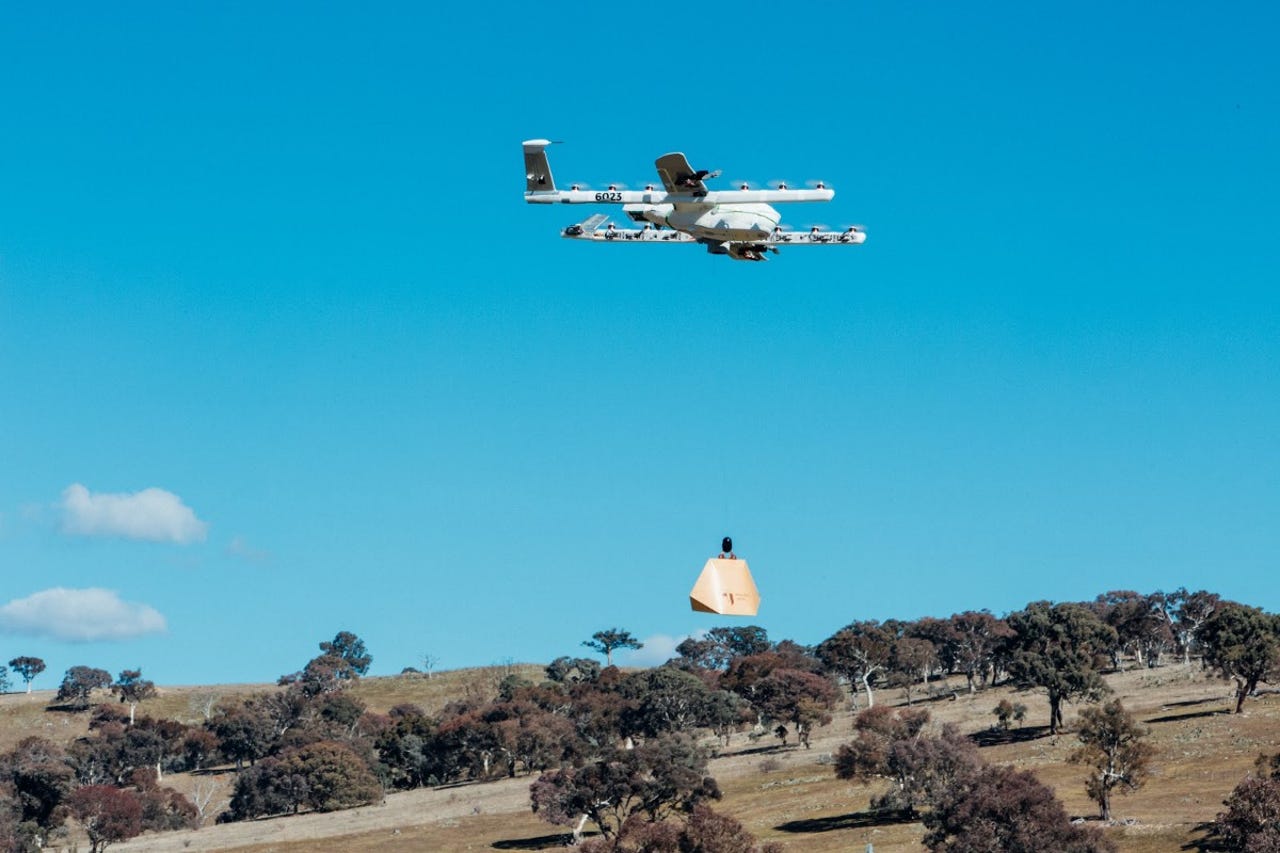Project Wing testing drone deliveries of medicines and burritos in Australia


Wing delivery drone flying over Queanbeyan, Australia
Project Wing, born from Alphabet's X innovation lab, has announced that discount pharmacy chain Chemist Warehouse and Mexican food chain Guzman y Gomez will be trialling its drone delivery technology in Australia.
Customers who have purchased items from Chemist Warehouse and Guzman y Gomez using the Project Wing app on their smartphones will have their orders delivered to their homes via drone.
James Ryan Burgess, project lead at Project Wing, wrote in a blog post on Tuesday that the company is looking to better understand how much notice needs to be provided to Guzman y Gomez staff for a drone's arrival so that they can prepare orders in a "well-timed workflow".
"[We'll] need to make sure our technology fits in smoothly into their kitchen operations, as their staff have to juggle many orders at once to ensure that every customer is served fresh, hot food in a timely fashion," he wrote.
In the case of Chemist Warehouse, Burgess said Project Wing wants to ensure its system can deliver a wide variety of products, including vitamins, dental care, sun care, and over-the-counter medicines.
"By practicing how we pack items of very different shapes and sizes into our fixed-sized package, we'll learn how to optimize how many items we're able to deliver per flight," he wrote.
Burgess additionally announced that Project Wing had successfully tested its drone delivery technology in the rural outskirts of the Australian Capital Territory and New South Wales in an effort to address the complexity of making deliveries directly to people's yards.
Testers included alpaca farmers, math professors, and artists.
Burgess said testers in rural areas suggested drones be used to transport drinking water, food, medical supplies, and mechanical parts to emergency service personnel operating in rural areas or places cut off due to floods and fires.
As such, Project Wing will work with the Australian Capital Territory Rural Fire Service to assess how drone delivery technology can be used to support emergency efforts.
Burgess admitted that despite Project Wing's drones being able to deliver items almost anywhere, the logistics is "more complicated than it looks".
"[We] need to train our systems to reliably identify safe and convenient delivery locations ... We have to incorporate customer preferences -- e.g. many of our testers would like packages delivered to backyards so they're not visible from the road, or near kitchens so food items can be unpacked quickly," he wrote in the blog post.
"And we have to be ready to accommodate changing conditions at the delivery location. While our unmanned traffic management (UTM) platform lets us pre-plan a flight route, the sensors on our aircraft are responsible for identifying obstacles that might appear during a flight or delivery, like a car parked in an unexpected spot, or outdoor furniture that's been moved.
"The more test deliveries we do, exposing the sensors on our aircraft to new delivery locations, the smarter our aircraft's algorithms will one day become at picking a safe spot for deliveries."
Project Wing tested its UTM platform at a Federal Aviation Administration's test site run by the Virginia Tech Mid-Atlantic Aviation Partnership earlier this year. During the testing, one drone operator flew three Project Wing aircraft, using them to perform package pickup and delivery missions.
Simultaneously, and in the same area, other pilots operated two Intel Aero Ready to Fly Drones, as well as a DJI Inspire, to conduct automated search and rescue missions.
The test showed that the UTM platform could automatically manage the flight paths of all the drones involved, and that it could plan new routes for each when conflicts arose.
Thus far, Project Wing has focused on developing three core elements of the platform: real-time route planning for drones in the same area, sending notifications to operators of any unexpected changes to the aircraft route, and sending notifications regarding no-fly zones and safety-sensitive areas.
In August, the Queensland government published a consultation paper on the implementation of Australia's first whole-of-government drones strategy, addressing the technology's business opportunities and regulatory challenges.
According to Premier of Queensland Annastacia Palaszczuk, feedback from the Queensland Drones Strategy Consultation Paper will be used to help direct future policy and determine how best to take advantage of the potential of drones in supporting economic and jobs growth.
"My government wants to take drone technologies to the next level and to see Queensland become a world leader in drone investment, research, and development," the premier said in a statement at the time.
Correction October 17, 2017 2:15PM AEDT: Project Wing falls under Alphabet's X innovation lab.